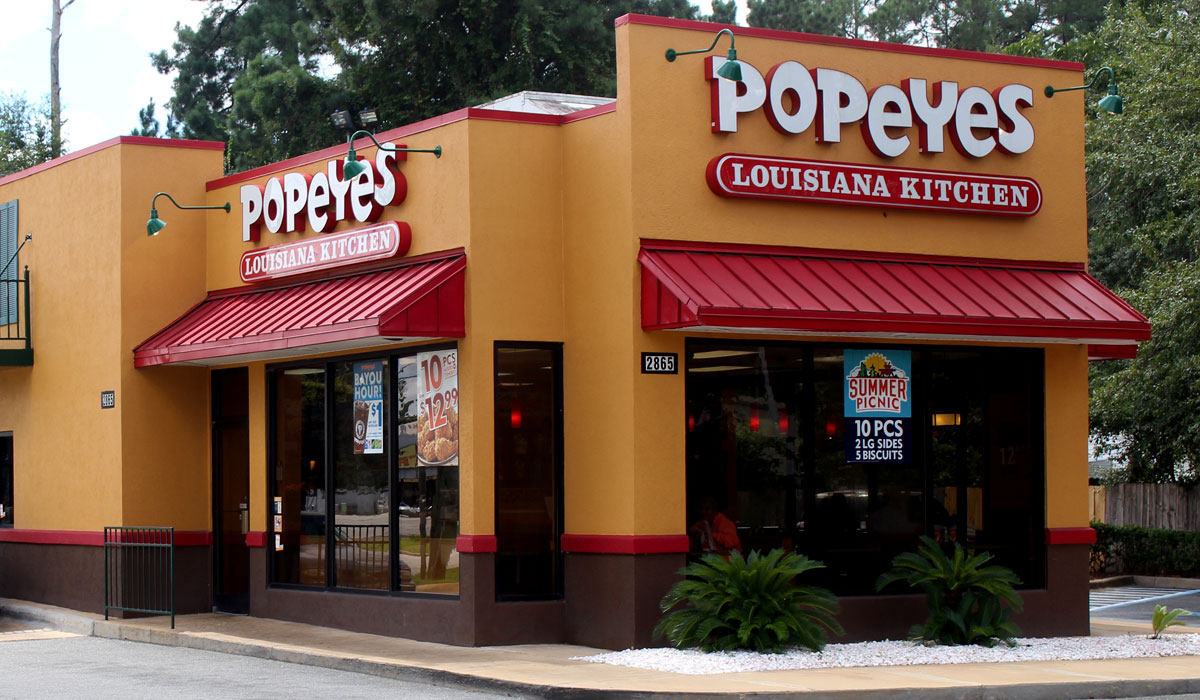Popeyes took a slight dip in the second half of March, as sales ran flat, year-over-year. But the COVID-19-fueled slowdown didn’t last. The brand’s wildly popular chicken sandwich proved to be pandemic proof.
Parent company Restaurant Brands International revealed in a securities filing Thursday that the chicken chain’s comparable sales jumped into the “positive low-40s” from the end of March to the third full week of May. To illustrate just how brief the lull was for, Popeyes still reported comps growth of 26.2 percent in Q1—a three-month period that ended March 31.
The chicken sandwich debuted in August and promptly led to comps hikes of 10.2 percent and 37.9 percent in Q3 and Q4 of fiscal 2019, respectively. Until results start to lap each other next year, expect to see similar robust performance, crisis or not.
In terms of COVID-19 trends, Popeyes’ surge is also likely buoyed by a heavy drive-thru footprint and lack of breakfast service—a daypart that has struggled mightily in recent weeks as daily work routines get tossed aside.
The same can’t be said for Tim Hortons and Burger King, RBI’s other, larger concepts. The company said Tim Hortons’ Canada same-store sales were trending in “negative mid-20s” up from the “negative mid-40s” in the second half of March.
Burger King’s U.S. comps were running in “negative mid-single digits” up from “negative low-30s.”
A LOOK BACK:
By October, here’s how big Popeyes’ chicken sandwich had already become
“We are encouraged by the continued sales improvement in our home markets for Burger King, Tim Hortons and Popeyes,” RBI CEO Jose Cil said in a statement. “All three of our brands have benefitted from guests who have increased their usage of our thousands of drive thrus across North America as a safe, quick and convenient option to feed themselves and their families”
RBI said “substantially” all of its restaurants in home markets were open. In Europe, the Middle East, and Africa, roughly 60 percent of the company’s restaurants are running. It’s north of 85 percent in the Asia Pacific, including 98 percent of RBI’s China locations—up from about 50 percent at the peak of the crisis. In Latin America, about half of RBI’s stores are operational.
For reporting purposes, the company is not including restaurants “closed for a significant portion of a month” in its comps base.
RBI said “many” of its restaurants continue to operate with limited-service models. However, it’s in the process “of fully reopening restaurants where appropriate with extensive safety precautions and in accordance with local and government guidance.”
“We expect to continue our reopening process very carefully and with guest and team member safety as our top priority,” the company added.
Cil noted RBI rapidly accelerated its digital platforms in recent months and witnessed significant growth in home delivery.
“We have seen growth in our average order value, driven by group orders and family bundles that our guests are recognizing as both convenient and affordable,” he said. “And I am very proud of our teams that have widely communicated all of the efforts we are undertaking to work with our restaurant owners, protect their team members and ultimately ensure a safe and welcoming environment at all our restaurants as we have remained open to serve our guests and now begin to reopen dine-in options as well.”
Burger King’s U.S. same-store sales declined 6.5 percent in Q1, while Tim Hortons’ global figure dropped 10.3 percent. The two brands closed 2019 with Q4 results of 0.6 percent and negative 4.3 percent, respectively.







